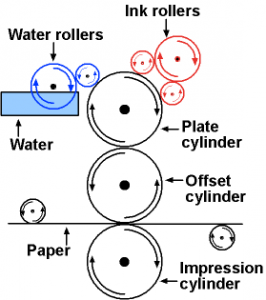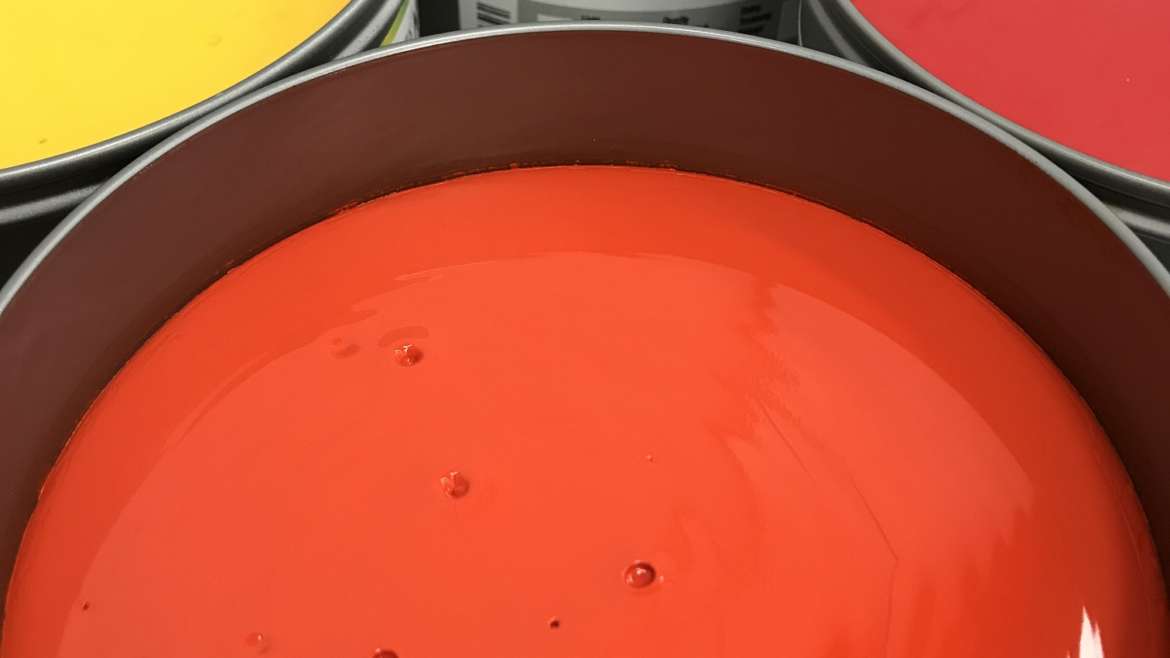The question “what is offset printing?” is usually followed by, “which is better between offset and digital printing?”
Both methods are valid! There are circumstances that determine whether one method is more suitable for you than the other, such as volume, colour reproduction, and paper choice. In this post we will explain a bit about offset printing.
FIRST A LITTLE BACKSTORY ON OFFSET PRINTING
The development of printing is one of the most important inventions in human history. It has been vital to the spread of information, especially in the pre-digital age. From the Phaistos disc, and the use of stamps in the second millenium, to the development of Gutenberg’s letterpress, to computer to plate technology, we’ve come a long way, baby.
HOW DOES OFFSET PRINTING WORK?
First, the image to be printed is transferred to a plate, through a machine called an image setter. Unlike in Gutenberg times where individual characters were laid out in a frame for letterpress, or carved into a block of wood for xylography, these days it can all be done in a snap, digitally.
With individual rollers for each colour, the image is offset from the plate onto a rubber blanket, and from the blanket onto the paper. Through a process based on the repulsion of ink and water, known as lithography, the ink only adheres to the parts of the plate to be printed.
The other parts of the plate attract water instead, which prevent ink from printing in these areas.

WHEN TO USE OFFSET PRINTING
Offset is best for large runs. It’s also the most accurate colour reproduction, and the sharpest print quality. This is especially true for solid areas of print, like a grey background. It is the most commonly used print method for large quantities of booklets and catalogues.
However, there are many cases when the difference between a digital and an offset print is only visible if you squint, so usually quantity is the main reason to choose offset. A lot of time goes into the set up of the plates and the press, so offset printing is more cost-effective for larger runs.
Once you have everything ready to print, the high speed of the offset press also means it does not cost much more to just run more sheets. This is usually not the case for digital printing.
Digital printing does not need plates, and has minimal set up time required, so it is better suited to shorter runs. However, it does not always have perfect registration, so if you have small or tight borders, offset printing would be best.
One of the major differences is in colour. Offset printing means you can use specific Pantone colours – find out more about that in this post about colour matching. If you would like to use special colours such as pastels or fluoro Pantone colours, offset is the way to go!
CONCLUSION
Digital printing is fast and economical for short runs, but for bigger volumes and perfect colour and registration, offset is your friend!
We do both digital and offset printing at MJ, which Hannah Montana would refer to as the best of both worlds, so we can make a recommendation based on your needs. Get in touch!

